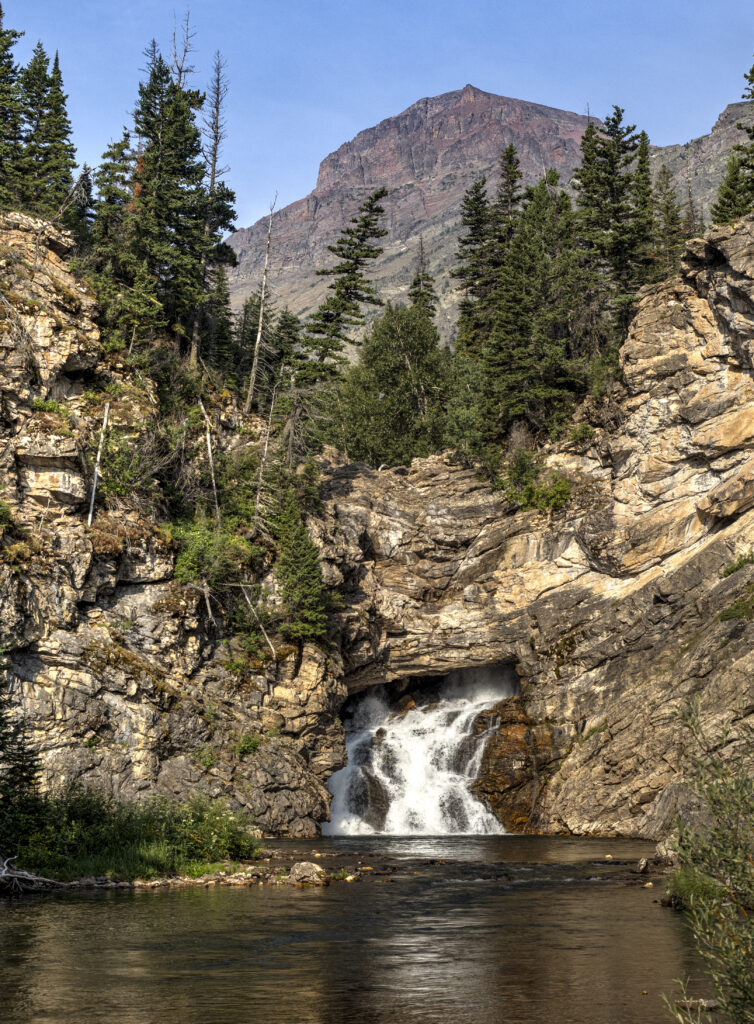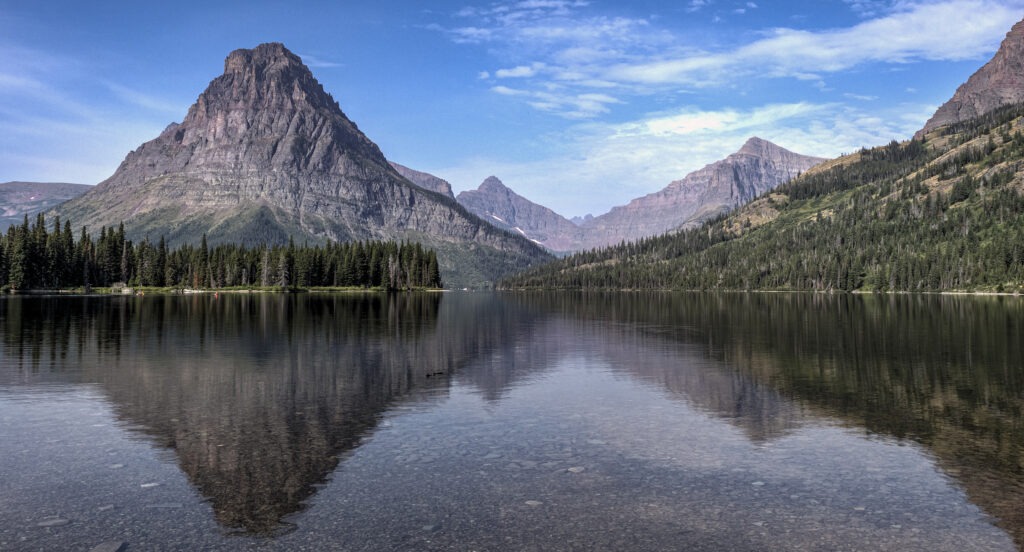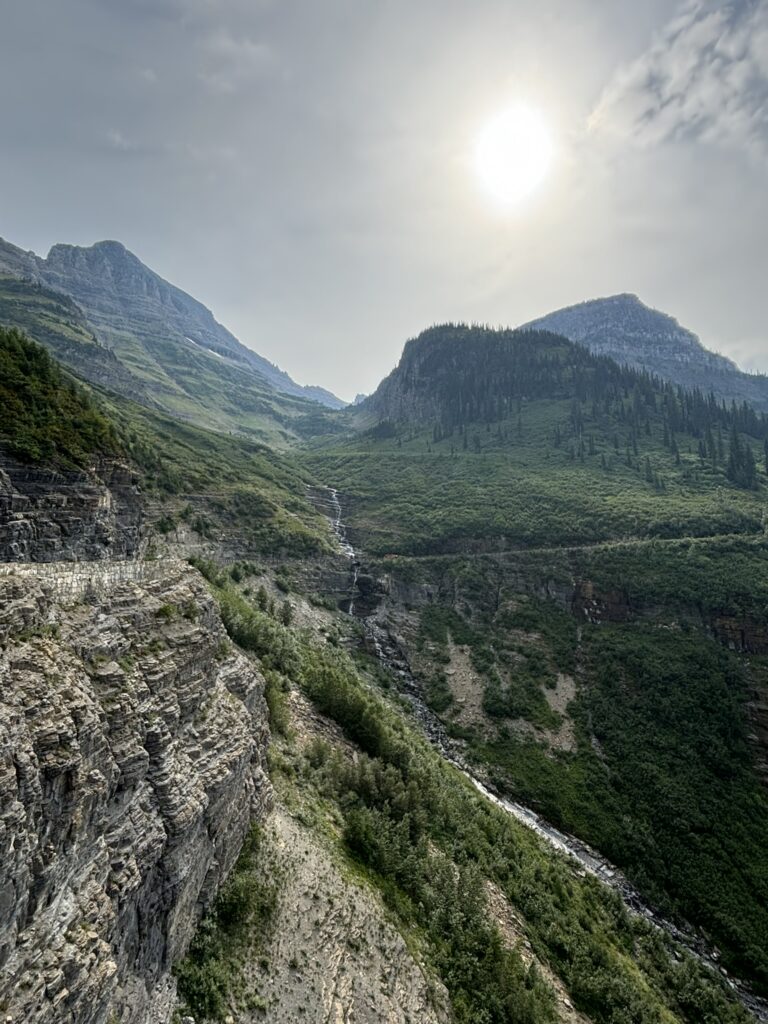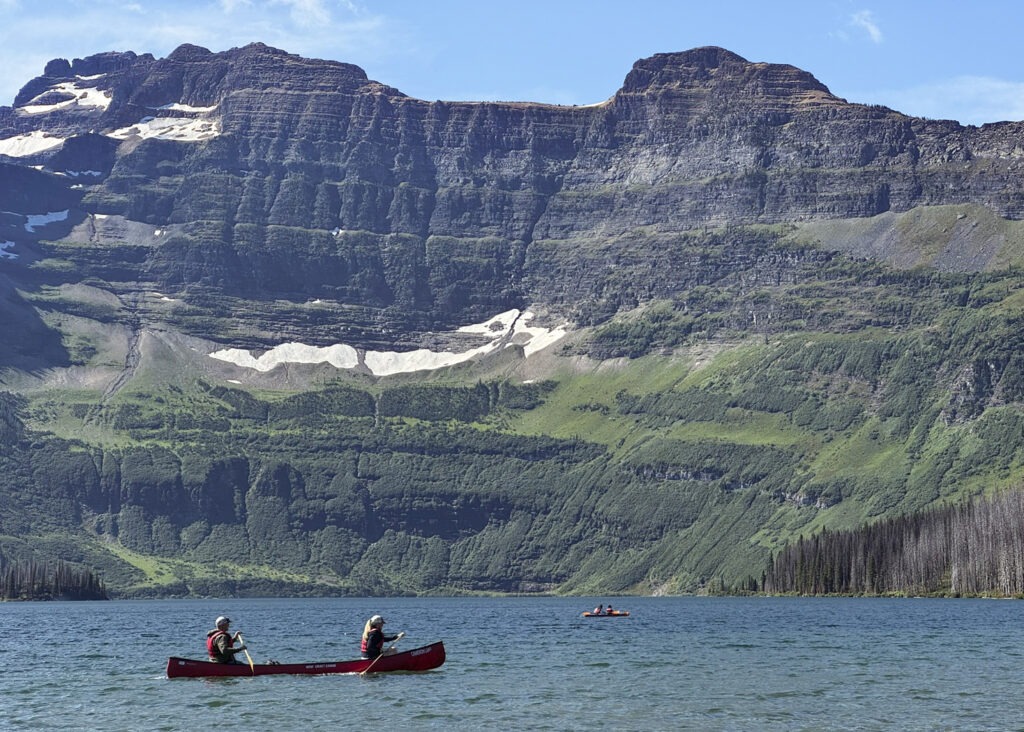The tragedy that unfolded at Jasper National Park gave us an additional three days in Glacier, one of our favorite places from our 2016 trip out west.
This version, though, was slightly different. We were staying on the east side of the park, which is not as commonly visited as the west side, and indeed we didn’t explore the east side at all on our first trip. So, first day here found us off to the Two Medicine area in the southeast corner of the park.

Two Medicine Lake is scenic, although frankly not as dramatic as what one sees on the Going to the Sun Road.

Speaking of the Going to the Sun Road, we revisited that drive and yes, it’s just as good no matter how many times one does it:

The highlight of the eastern side of the park, though, came when an impulse hit Wendy to drive back into Canada to visit Waterton National Park, the other half of what is Glacier-Waterton International Peace Park. And the highlight of that highlight was Cameron Lake:

The thing about Glacier National Park, though, is glaciers. Specifically, the vanishing glaciers. The National Park Service is completely exercised about the state of glaciers in the park and, by implication, the issue of climate change. “Losing the park’s glaciers could be a lesson about the significance of global warming.” On one display, NPS says Glacier’s glaciers will be gone by 2030.
The issue of global warming is so mixed up with politics and dubious science that it’s hard to know what to make of the current hysteria, especially for those of us for whom this is number 12 (by actual count) of the end-of-life-as-we-know-it scenarios we’ve already lived through (starting with nuclear annihilation in the 1960s, the population bomb in the 1970s, the depletion of oil in the 1980s, a “China syndrome” nuclear winter, etc. etc. etc.). Furthermore, many of the dire projections about global warming, including even disappearing glaciers, have been strikingly inaccurate. Recall, in 2006, Al Gore presented us with an “inconvenient truth”: “Within the decade, there will be no more snows of Kilimanjaro.” Wrong. Turns out that wasn’t an inconvenient truth so much as a convenient falsehood.
Even still, it is apparent that earth began warming in the 1850s, and that warming continues to this day, and that anthropogenic emissions of greenhouse gases have contributed to that warming. And it is true that global warming has consequences, including some that may be only aesthetically important, but are significant anyway. Like vanishing glaciers. There has been a visible, measurable decrease in the size and extent of glaciers in Glacier National Park. The real questions, though, like what fraction of current warming is due to human causes, how consequential is that warming, what we can and should do about it, the costs versus the benefits of response options, are not only beyond what can intelligently discussed here, they seem to be beyond what can be intelligently discussed anywhere.
So, in the meantime, Glacier National Park was well worth the visit. And I’m sure we’ll be back, glaciers or not.
